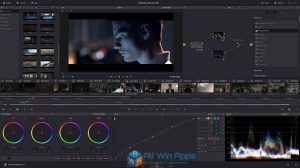

- How to stabilize video in davinci resolve 15 how to#
- How to stabilize video in davinci resolve 15 pro#
Most of the time, the above stabilization process will be sufficient, but if your footage is especially jittery or suffers from rolling shutter distortion, then hang around for some pro tips below. You can toggle Stabilization on and off in the Video Inspector to see the before and after. When you’re finished, rewatch your footage to check if it’s looking alright. You may need to try different configurations or even cutting your footage into clips to achieve the best results. Adjust these to achieve your desired effect. SmoothCam controls allow you individually control Translation Smooth, Rotation, and Scale Smooth. If your clip does not feature a camera movement, then you should choose SmoothCam, which will stabilize Translation, Rotation, and Scaling (zoom). You can also select Tripod Mode if your camera is stationary. You can adjust the amount of stabilization by changing the Smoothing amount.

If your clip features camera movement such as panning or zooming, you should choose InertiaCam, which will stabilize according to the camera’s dominant motion. From here, you can adjust the stabilization controls, or even change the stabilization method yourself. The default stabilization method in Final Cut Pro is Automatic, which will choose a stabilization method for you. Step 3: Fine-Tune the Automatic Stabilization Options When stabilization is complete, move the Playhead to the beginning of your clip in the Timeline and press space to watch it.If you look at the viewer during this time, it should say, “Analyzing for dominant motion…” Wait for Final Cut to process the video.Find Stabilization in the Video Inspector and turn it on.If your clip is long, it can take a few minutes. The hardest part about this step is waiting for Final Cut Pro’s stabilization algorithm to analyze your footage. You may want to remove sections with too much camera movement because they will diminish the overall stabilization quality. Trim off any parts you don’t want to be included in the clip.If you haven’t already, create a new Project and load your clip into the Timeline.Step 1: Prepare Your Clipĭigital stabilization in Final Cut Pro works across entire clips–not ranges–so you’ll need to load your clips into the Timeline and trim off any sections that you don’t want to stabilize. If you’ve never used it before, you’ll be amazed how fast and easy it is to transform shaky hand-held camera footage into a smooth, professional-looking video.
How to stabilize video in davinci resolve 15 how to#
Part 1: How to Automatically Stabilize Footage in Final Cut Proįor simple stabilization tasks, this three-step workflow for using the built-in FCPX stabilization tools should be enough.


 0 kommentar(er)
0 kommentar(er)
